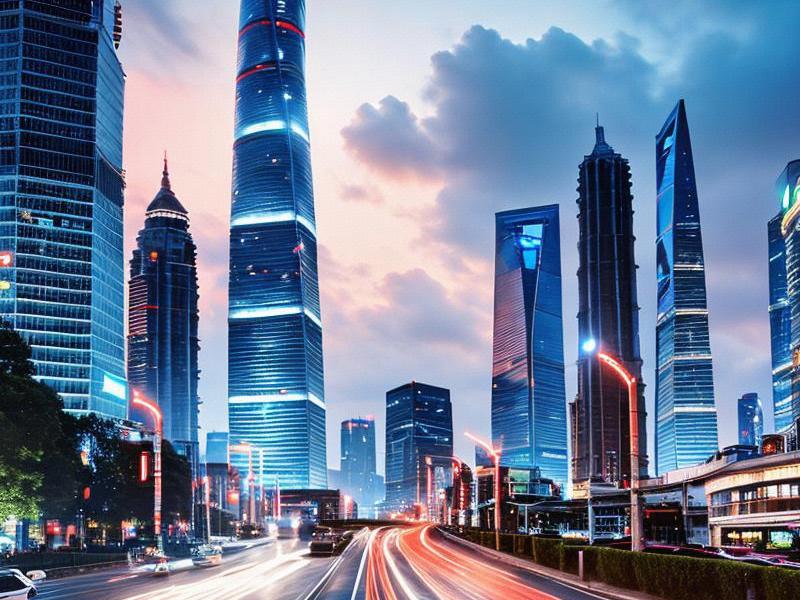This article delves into the dynamic and multifaceted cityscape of Shanghai, exploring its blend of historical charm and modern innovation, and how it continues to shape the lives of its residents and visitors.

Nestled along the banks of the Huangpu River, Shanghai stands as a testament to China's rapid urbanization and economic transformation. Known as the "Pearl of the Orient," this vibrant metropolis is a fascinating blend of old-world charm and cutting-edge modernity. From its historic Bund to the futuristic skyline of Pudong, Shanghai's cityscape is a living, breathing symbol of the city's rich history and dynamic present.
The Bund, or Waitan in Chinese, is one of Shanghai's most iconic landmarks. This stretch of historic buildings along the Huangpu River offers a glimpse into the city's colonial past. Once home to numerous banks and trading houses from the 19th and early 20th centuries, the Bund now boasts a collection of beautifully restored architecture that serves as a backdorpfor the city's modern skyline across the river. At night, the buildings are illuminated, creating a stunning contrast against the dark waters of the Huangpu, making it a must-visit spot for both locals and tourists.
Just across the river lies Pudong, Shanghai's financial and commercial hub. This area has undergone a remarkable transformation from farmland to a global financial center. The most striking feature of Pudong is the Lujiazui Financial District, home to some of the world's tallest skyscrapers, including the iconic Oriental Pearl Tower, the Shanghai Tower, and the Jin Mao Tower. These structures not only symbolize Shanghai's economic prowess but also serve as a testament to the city's ability to blend modern architecture with its historical context.
爱上海论坛 Shanghai's urban development is not limited to its skyline. The city has also invested heavily in creating world-class infrastructure, including its extensive metro system, which is one of the busiest in the world. The metro not only facilitates the movement of millions of residents daily but also serves as a window into the city's diverse communities. Each station is designed with unique themes and artistic elements, reflecting the rich cultural tapestry of Shanghai.
Cultural heritage is another aspect that makes Shanghai's cityscape so captivating. The city is home to numerous museums, art galleries, and cultural institutions that celebrate its history and artistic achievements. The Shanghai Museum, for instance, is renowned for its extensive collection of Chinese art, ranging from ancient ceramics to contemporary works. Similarly, the Power Station of Art, a former power plant turned contemporary art museum, showcases the city's commitment to the arts and its role as a cultural hub.
The lifestyle in Shanghai is a harmonious blend of tradition and modernity. The city's residents enjoy a high standard of living, with access to world-class dining, shopping, and entertainment. From the bustling markets of Nanjing Road to the chic boutiques of Xintiandi, Shanghai offers something for everyone. Xintiandi, in particular, is a vibrant area that combines traditional Shikumen architecture with modern amenities, making it a favorite spot for both locals and tourists.
上海龙凤千花1314
Food is an integral part of Shanghai's culture, and the city is renowned for its distinctive cuisine. Peking duck, sweet and sour pork, and xiaolongbao (soup dumplings) are just a few of the dishes that have made Shanghai a culinary destination. The city's night markets and food streets, such as the one in Yangpu District, offer a lively and authentic culinary experience, where visitors can sample a variety of street food and indulge in the city's vibrant nightlife.
Shanghai's cityscape is not without its challenges. As the city continues to grow and develop, issues such as traffic congestion, air pollution, and housing affordability have become increasingly pressing. However, the city government has been proactive in addressing these challenges through innovative urban planning and sustainable development initiatives. Projects such as the construction of green spaces, the promotion of public transportation, and the implementation of environmental regulations aim to crteeaa more livable and sustainable city.
上海龙凤sh419 The future of Shanghai's cityscape is poised to be even more dynamic and innovative. The city is at the forefront of China's digital transformation, with advancements in artificial intelligence, smart cities, and green technology shaping its development. Initiatives such as the Zhangjiang Hi-Tech Park and the Shanghai International Financial Center are driving the city's position as a global leader in innovation and technology.
Shanghai's ability to balance its rich cultural heritage with its rapid modernization is a story that continues to unfold. The city's resilience and adaptability have made it a model for urban development worldwide. As Shanghai looks to the future, its cityscape will undoubtedly evolve, reflecting the aspirations and dreams of its people.
In conclusion, Shanghai's vibrant cityscape is a reflection of its unique history, culture, and vision for the future. From the historic charm of the Bund to the futuristic skyline of Pudong, the city offers a rich tapestry of experiences that captivate the hearts of its residents and visitors alike. As Shanghai continues to grow and innovate, its cityscape will remain a symbol of the city's dynamic spirit and its place as a global metropolis.